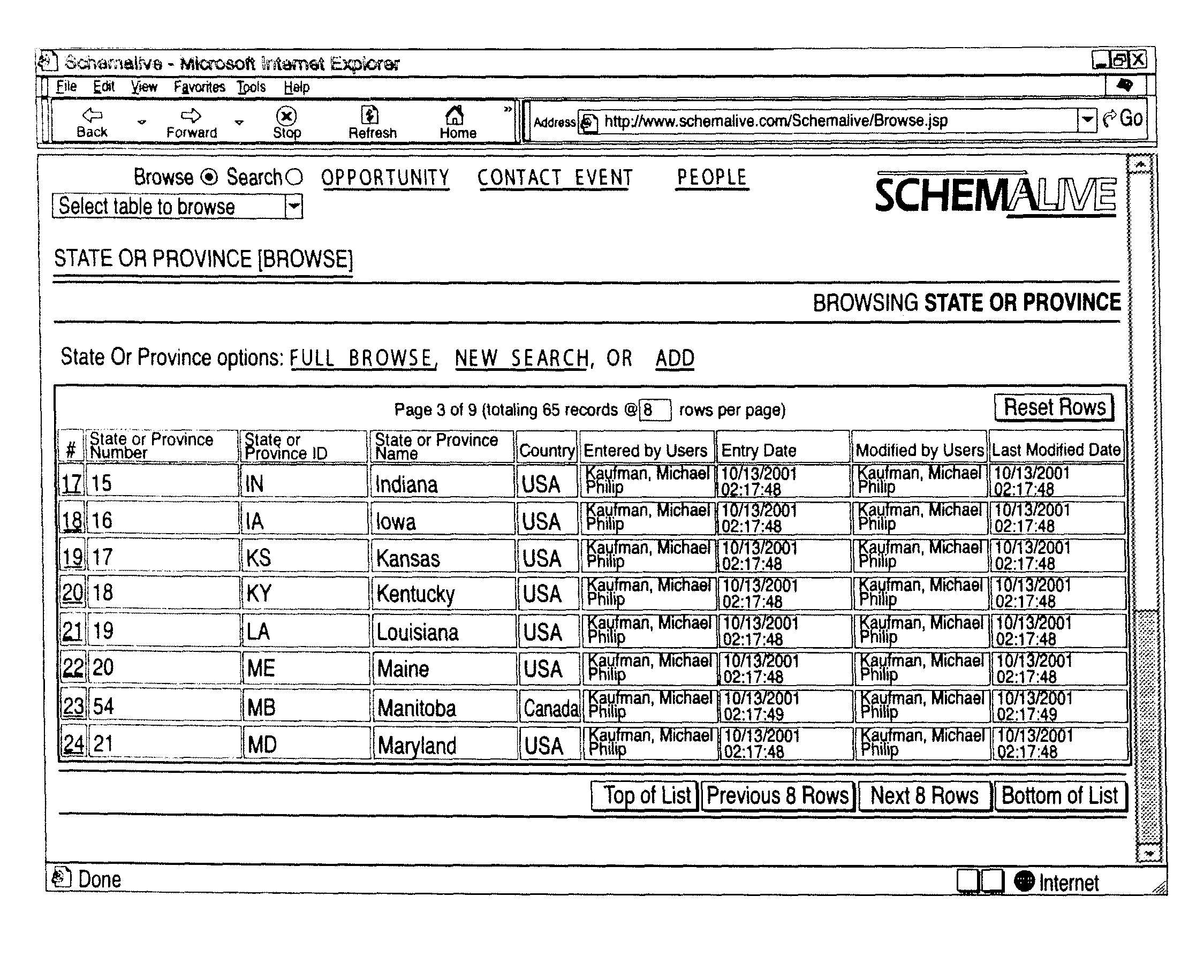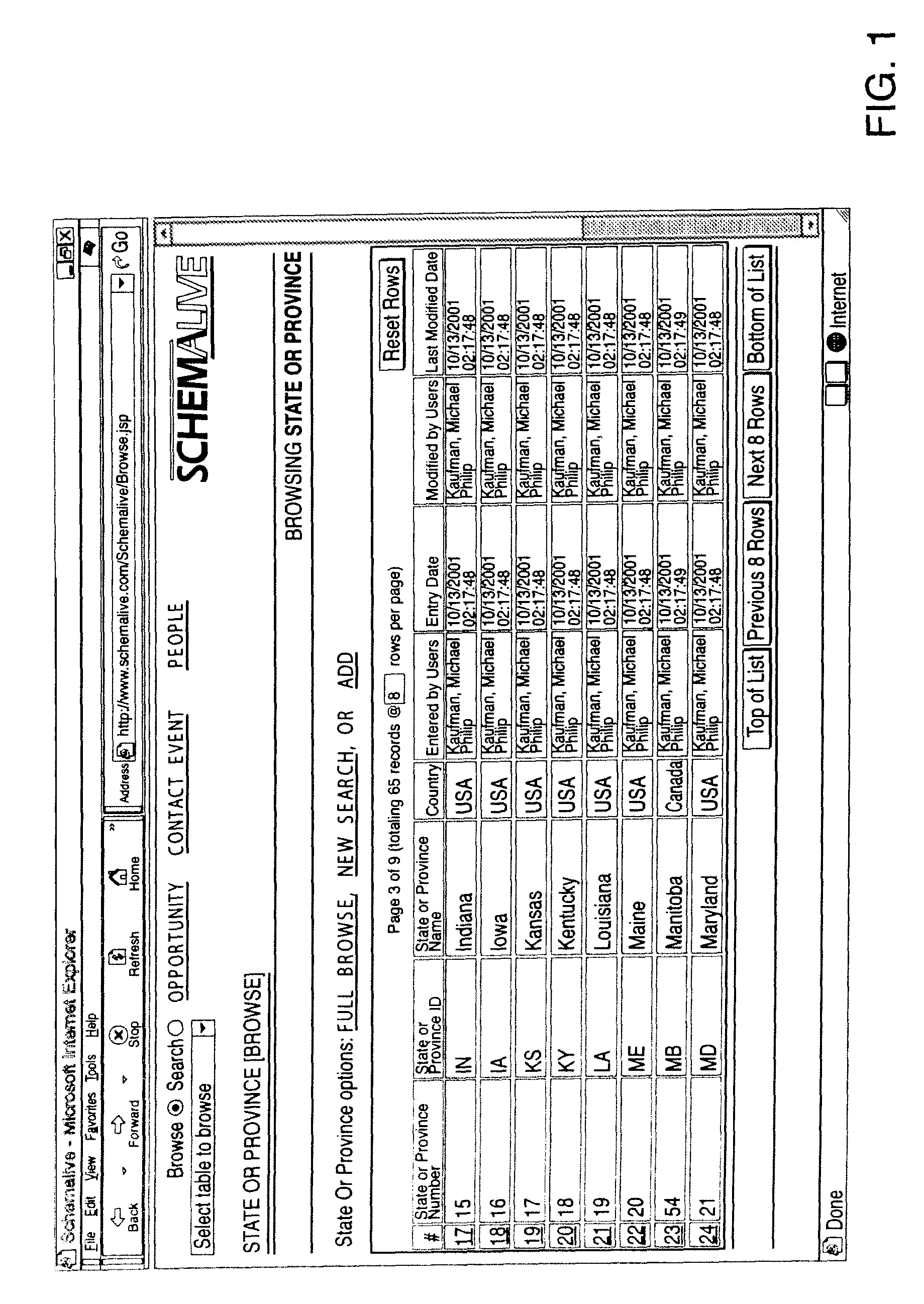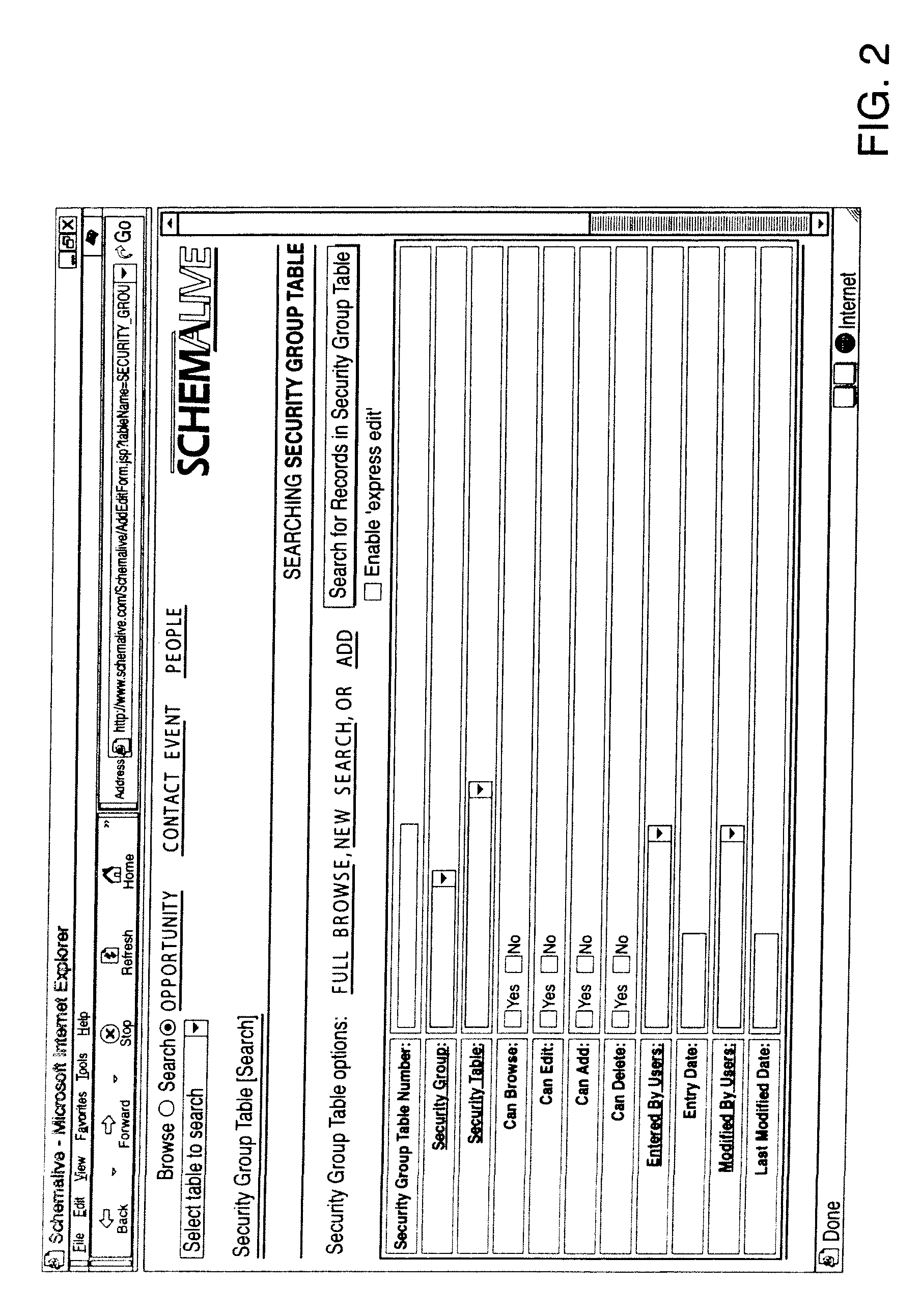System and method for generating automatic user interface for arbitrarily complex or large databases
a database and user interface technology, applied in the field of system and method for generating automatic user interface for arbitrarily complex or large databases, can solve the problems of requiring by-hand coding at a very low level of functionality, limited current tools for easing the development burden, and considerable work remaining, etc., to achieve natural, powerful, and easy-to-use effects
- Summary
- Abstract
- Description
- Claims
- Application Information
AI Technical Summary
Benefits of technology
Problems solved by technology
Method used
Image
Examples
Embodiment Construction
[0027]The preferred embodiment of the invention, as illustrated in FIGS. 1 through 9E, corresponds in most respects to an implementation of the invention being developed under the trademark SCHEMALIVE™ which is herein referred to as the “reference implementation.” The preferred embodiment is further represented substantially in full by the reference-implementation source code files, documentation and scripts in the appendices accompanying and incorporated by reference into this application, as further described in the text that follows. The preferred embodiment includes in addition some further developments which are herein described which have not as yet been rendered in the reference implementation.
[0028]Although the invention has been most specifically illustrated with a particular preferred embodiment, it should be understood that the invention concerns the principles by which such embodiment may be designed, and is by no means limited to the configuration shown.
[0029]As can be ...
PUM
 Login to View More
Login to View More Abstract
Description
Claims
Application Information
 Login to View More
Login to View More - R&D
- Intellectual Property
- Life Sciences
- Materials
- Tech Scout
- Unparalleled Data Quality
- Higher Quality Content
- 60% Fewer Hallucinations
Browse by: Latest US Patents, China's latest patents, Technical Efficacy Thesaurus, Application Domain, Technology Topic, Popular Technical Reports.
© 2025 PatSnap. All rights reserved.Legal|Privacy policy|Modern Slavery Act Transparency Statement|Sitemap|About US| Contact US: help@patsnap.com



